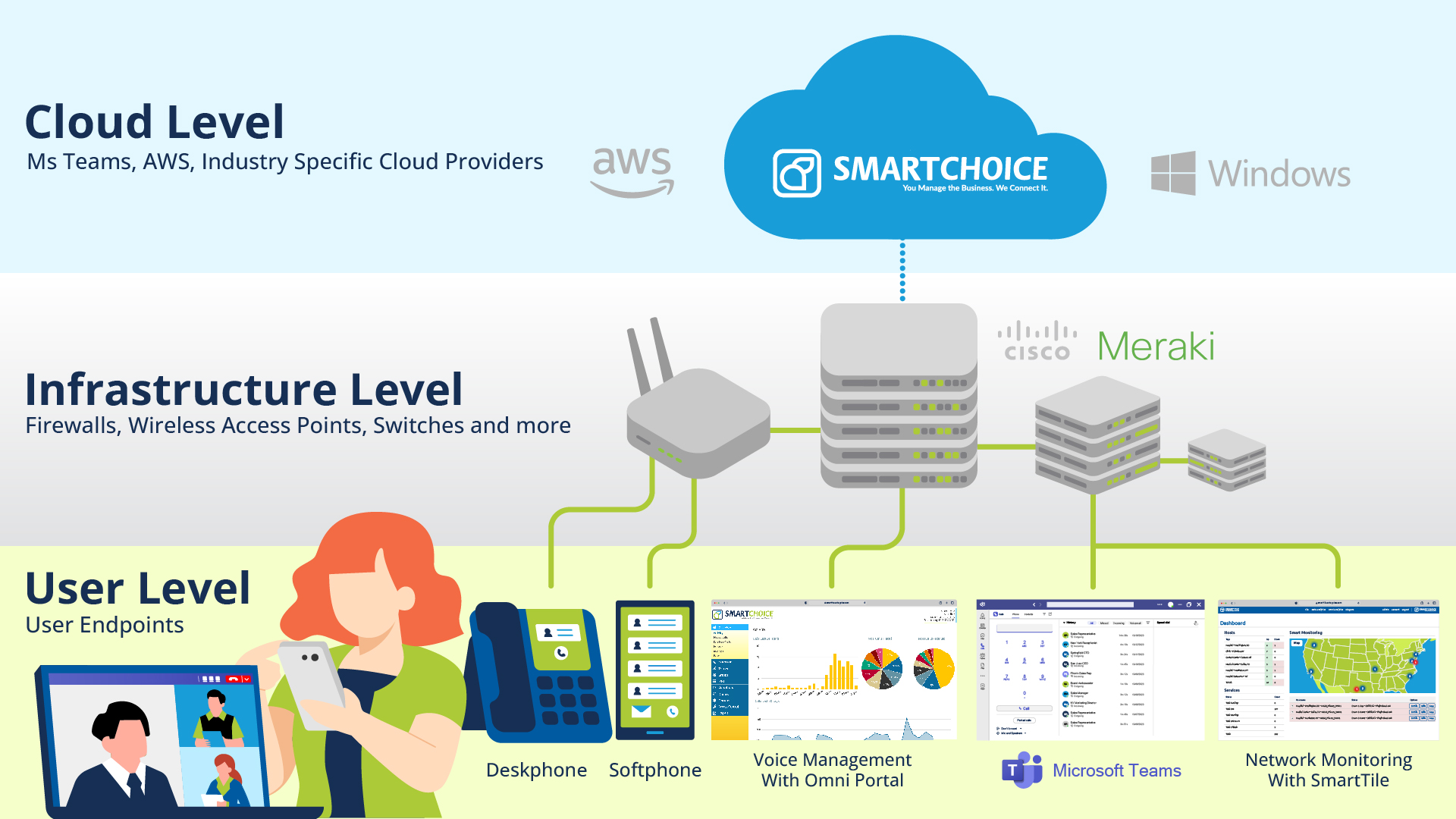Does My IT Department Have to Manage All of Our Technology?

Information Technology (IT) departments are increasingly becoming the backbone of organizations across various industries. However, with this central role comes a multitude of challenges, primarily due to the diverse demands placed on these departments. From maintaining robust internet connectivity to managing sophisticated collaboration tools and ensuring seamless voice communication, IT professionals are often pulled in many directions, leading to potential inefficiencies and burnouts.
The Challenges Facing IT Departments
Diverse Technology Demands: IT departments are tasked with managing a wide range of technologies – from traditional voice communications to modern collaboration tools. Balancing these diverse requirements often leads to stretched resources and conflicting priorities.
Rapid Technological Evolution: The constant evolution of technology means IT departments must continuously adapt and learn new skills, often on the fly.
Security Concerns: With the rise of cyber threats, IT professionals must ensure the security of voice, internet, and collaboration tools without hindering accessibility or functionality.
Budget Constraints: Despite their critical role, many IT departments face budget constraints, making it challenging to acquire or upgrade necessary technologies.
Strategies for Managing Voice, Internet, and Collaboration Tools
Integrated Solutions: Adopt unified communications platforms that integrate voice, video, messaging, and collaboration tools. This reduces the need to manage multiple standalone systems and simplifies user experience.
Cloud-Based Services: Leverage cloud-based solutions for scalability and flexibility. Cloud services can offer cost-effective and secure options for various IT needs, including data storage, collaboration, and communication tools.
Regular Training and Skill Development: Ensure that IT staff receive ongoing training to keep up with the latest technological advancements. This can be achieved through workshops, webinars, and certification courses.
Prioritization and Delegation: Develop a system to prioritize tasks based on urgency and importance. Delegate responsibilities effectively to avoid overburdening certain team members.
Vendor Partnerships: Establish strong relationships with technology vendors. This can provide access to better support, training, and insights into upcoming technologies and trends.
Feedback Loops: Implement regular feedback mechanisms from users to understand their challenges and needs better. This can help in tailoring IT services more effectively.
Automated Solutions: Utilize automation wherever possible to reduce repetitive tasks and free up time for more critical functions.
Regular Audits and Assessments: Conduct periodic audits of the existing technology stack to identify redundancies, underutilized resources, and areas for improvement.
IT departments play a crucial role in the seamless operation of modern organizations. By embracing integrated solutions, outsourcing, focusing on skill development, and leveraging automation and cloud services, they can more effectively manage the plethora of responsibilities they face. Adopting these strategies will not only streamline operations but also enhance overall organizational productivity and employee satisfaction.





